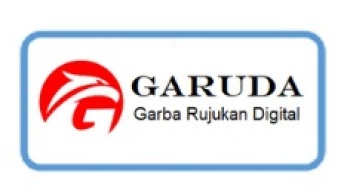GOOGLE CLASS ROOM:DISTANCE LEARNING MEDIA IN THE DANCE CREATION PROCESS
Abstract
Until now, the Covid-19 virus pandemic is not over, but all aspects of social life, especially in terms of education, must continue and adapt to the current situation. Various methods are used to carry out online learning processes using the Google Classroom application. The goal to be achieved is to further examine and describe the learning concepts used, the learning process carried out and the learning outcomes obtained by students while participating in this online learning. This research was conducted at SMPN 15 Bandung with the participation of class VIII.2 students. The method used in the research was descriptive qualitative. The research results show that the learning concept is determined by the process of creating learning syntax which is then determined by the online learning process using Google Classroom media and communicating with WhatsApp. In the process of implementing dance learning, it was carried out through virtual Google Classroom classes in five meetings using lecture and dance appreciation methods. The results of dance learning and the responses of class VIII.2 students obtained a level of difficulty that was still standard and according to the student's abilities so that students were able to complete and complete assignments optimally.
Full Text:
PDFReferences
Astuti, YT, Lestari, W., & Cahyono, A. (2021). Students' attitudes towards learning dance during the Covid-19 pandemic. Journal of Scientific Studies, 21(1), 101–110.
Cahyani, I., & Efgivia, MG (2021). The Influence of Distance Learning and Students' Learning Motivation on Arts and Culture Learning Outcomes in Class IX of SMP Negeri 1 Ciampea, Bogor Regency. Educate: Journal of Educational Technology, 6(1), 91–98. https://doi.org/10.32832/educate.v6i1.4530
Devi, K. (2019). Learning Indonesian Dance through Internet Resources to Increase Student Appreciation at SMA PASUNDAN 8 Bandung. Indonesian education university.
Gronlund, N. E. (1998). Assessment of student achievement. ERIC.
Hikmawaty, L. (2018). APPLICATION OF A DANCE CRITICISM LEARNING MODEL TO INCREASE STUDENTS' APPRECIATION OF DANCE WORKS. Magelaran: Journal of Arts Education, 1(1), 1–4.
Huberman, M., & Miles, M. B. (2002). The qualitative researcher's companion. Sage.
Komalasari, H., Budiman, A., Masunah, J., & Sunaryo, A. (2021). Multimedia Design for Android-Based Folk Dance Learning as Self-Directed Learning for Students in Lectures. MUDRA Journal of Arts and Culture, 36, 96–105.
Mulyasa, HE (2017). Development and implementation of the 2013 curriculum.
Nurdyasnyah, N., & Andiek, W. (2015). Learning technology innovation. Nizamia Learning Center (NLC).
Santyasa, IW (2007). Innovative learning models. Ganesha University of Education.
Sari, W., Rifki, AM, & Karmila, M. (2020). Distance Learning During the Covid 19 Emergency. MAPPESONA Journal, 1, 12.
Sudjana, N., & Rivai, A. (2013). Bandung Teaching Media. S Inar Baru Algesindo.
Syarifudin, AS (2020). Implementation of Online Learning to Improve the Quality of Education as a Impact of Implementing Social Distancing. Journal of Indonesian Language and Literature Education Metalingua, 5(1), 31–34.
DOI: https://doi.org/10.17509/jddes.v4i1.37910
Refbacks
- There are currently no refbacks.
Copyright (c) 2024 Journal of Dance and Dance Education Studies

This work is licensed under a Creative Commons Attribution-ShareAlike 4.0 International License.
E-ISSN 2776-5326 | P-ISSN 2797-8990
Address:
Program Studi Pendidikan Seni Tari, Fakultas Pendidikan Seni Dan Desain, Universitas Pendidikan Indonesia. Gedung FPSD - Jl. Dr. Setiabudi No.229, Isola, Kec. Sukasari, Kota Bandung, Jawa Barat 40154, Bandung, Provinsi Jawa Barat. (022)200-9198.
JDDES is licensed under a Creative Commons Attribution-ShareAlike 4.0 International License













